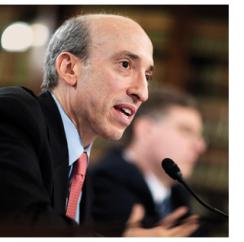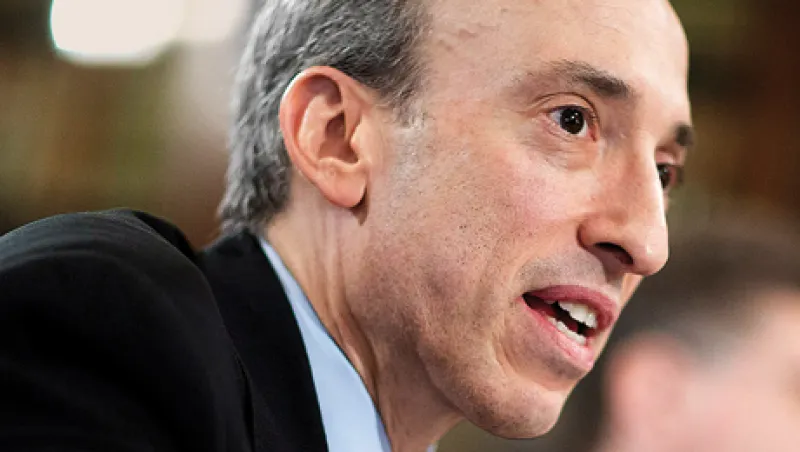Years into the Dodd-Frank revolution, the sansculottes are finally being heard. On March 11 central clearing became mandatory for major bank dealers and most other active U.S. users of swaps, complex derivatives through which counterparties exchange cash flows based on movements in an underlying asset. The occasion arrived amid a much-publicized shift toward “futurization” of the swaps market, with several exchanges now offering hybrid swap futures contracts as a cheaper alternative to cleared swaps.
“It’s the natural order of things for some realignment to take place,” said Commodity Futures Trading Commission chairman Gary Gensler at a January public roundtable he hosted to herald these developments. Gensler called for more input from the end users of swaps, especially nonfinancial companies, whose business hedging needs these derivatives were originally designed to serve.
Those users replied with vigor. They are not, on the whole, happy. At stake is the question of whether swaps will remain a market with some real-world economic utility or evolve into a purely financial one for speculators and trading firms. “The reason the swaps market has become so big is precisely because of its ability to be customized,” says Tom Deas, treasurer of FMC Corp., a Philadelphia-based chemicals producer that uses over-the-counter swaps to hedge its natural-gas exposure. The regulators “have taken what had been a balanced situation, and they’ve exacerbated it and made it unbalanced.”

But with the clearing timetable settled, the reality looks different. Dealers are subject to margin and collateral requirements, and end users may have to swallow that extra cost, warns Luke Zubrod, a director at Kennett Square, Pennsylvania–based Chatham Financial, which advises businesses that use derivatives to manage risk. End users “will still bear higher costs in order to continue transacting in the OTC market,” says Zubrod, noting that the exact increase is still unknown.
But there are alternatives to swaps. In recent months CME Group, IntercontinentalExchange and other major exchange clearinghouses have rolled out new products to take advantage of the enduring uncertainty over swaps reform, including other derivatives, such as futures or hybrid swap futures. To use the lingo of the trade, swaps are becoming “futurized.”
But the features of swaps that corporate users find most useful — their ability to be customized to meet precise business risks, and the private, bilateral negotiation of margin to offset risk — are not native to futures. And swaps are much chunkier than futures, which typically trade in small lots at high volume. “To the extent we’re layering incentives in the market that might cause [market participants] to move toward futures, that presents an unwelcome trade-off for an end user,” Zubrod says.
To hedge the natural-gas exposure associated with a typical year’s production, chemicals company FMC would execute about 100 transactions, including uncleared calendar-year OTC derivative strips and basis swaps, both of which settle monthly. The same hedge in the futures market would require 144,000 transactions, using “stacked” futures with daily margining.
Treasurer Deas says a business like his isn’t equipped to handle the trading activity that a switch to futures hedging would involve. “It may be that we are confronted with the Hobson’s choice of forgoing the kind of risk management we had been used to and keeping the risk, with whatever consequences that has, versus using a risk mitigation tool that’s overly burdensome,” he says. The danger of the latter is that companies will divert capital away from growing their businesses.
In the European Union regulators are moving toward loosening capital requirements for bank dealers when they transact with end users hedging commercial risk, thus avoiding the chance that dealers will pass on this cost. U.S. users want a similar relaxation.
Gensler, whose term expires at the end of this year, is reportedly considering a second stint at the helm of the CFTC. By his estimate, 80 percent of new swaps rules have been finalized. But Gensler has much left to ponder. As for end users, they see a picture familiar from many previous episodes of the debate over derivatives reform: questions many, answers few, implications significant.







